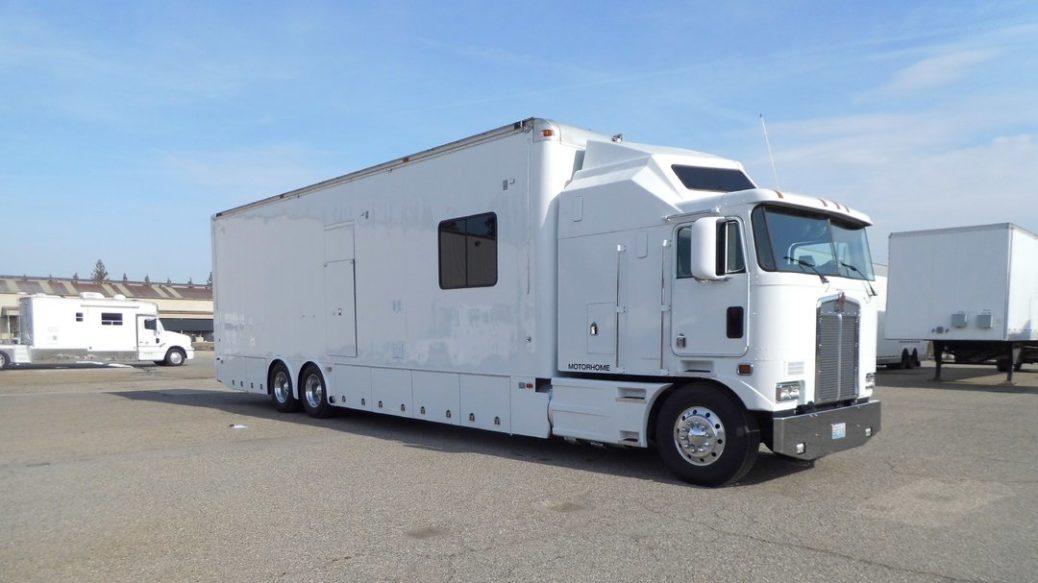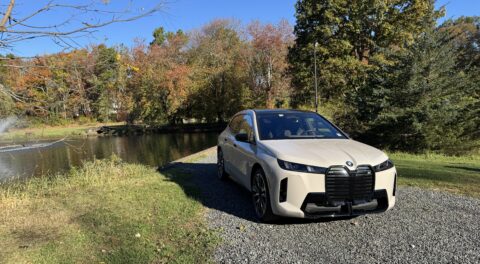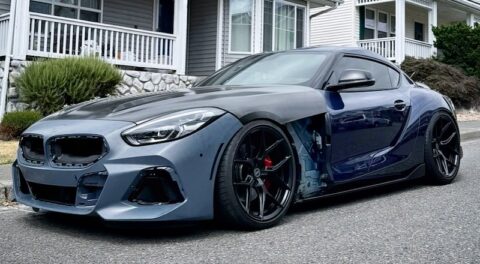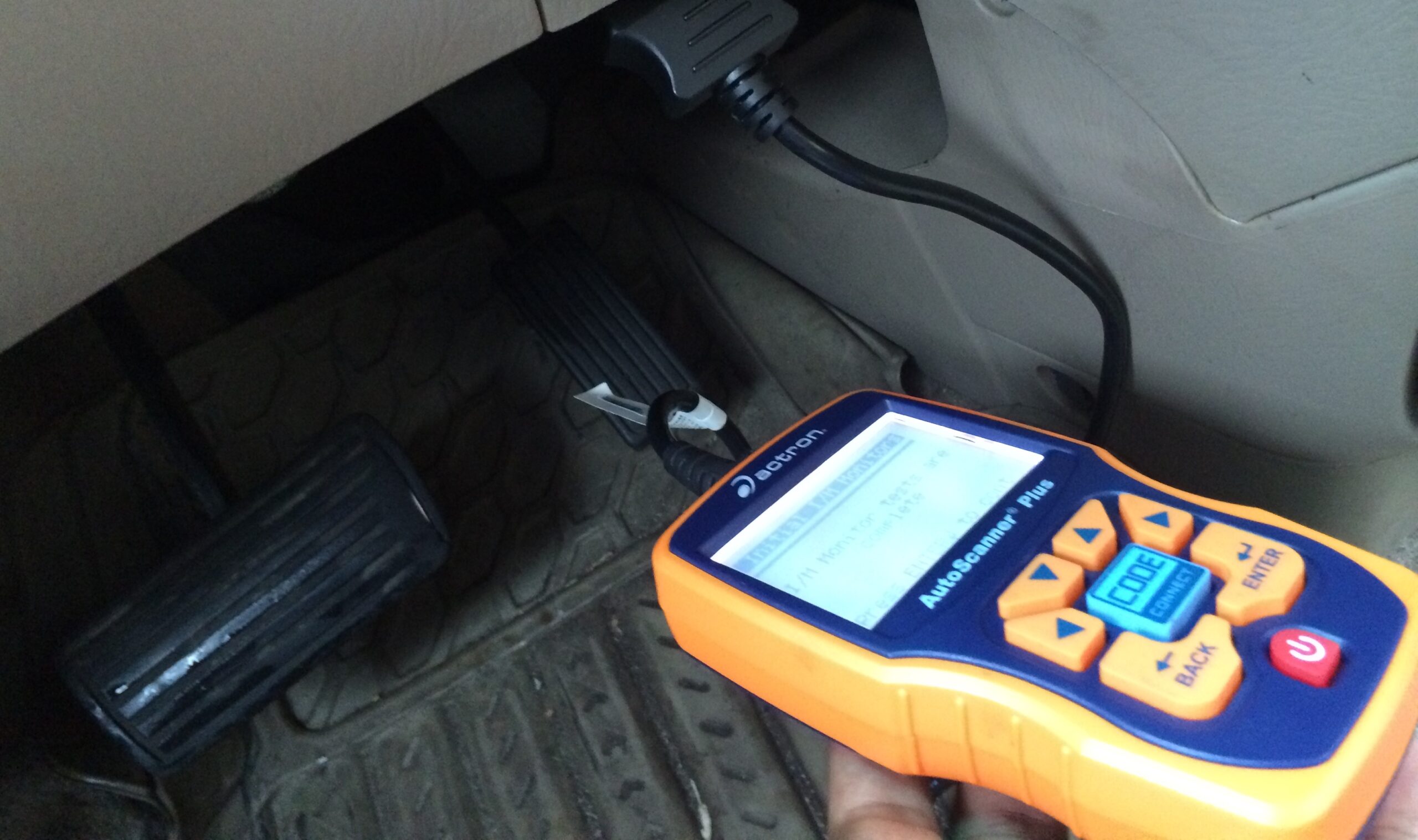In January a new race car made its way into my fold. I’ll save the details for another story, but in short, it’s a 2002 BMW M coupe (aka the Clown Shoe) built for the National Auto Sport Association (NASA) GTS3 class. Its mission is to preserve my other Clown Shoe (the red one), since I have reached the point in developing it for track duty where permanent modifications would be required to take it any further. That would break a hard and fast rule that I have maintained with my first and legacy M-car ever since I got it a decade and a half ago.
The race car overcomes another hurdle that I have always had in pushing my original Clown Shoe near the limit on the track: It’s always been a little too precious. A less-precious and safer example might relieve any subconscious reservations as I visit the limit. Plus, it’ll be nice to go racing again.
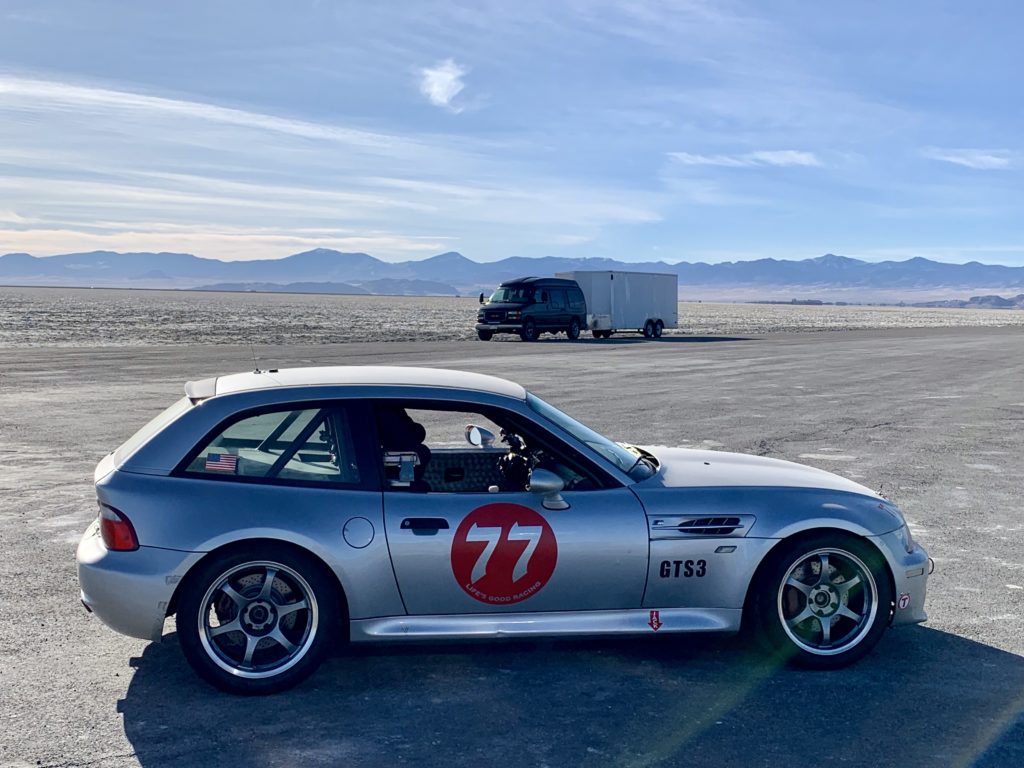
A new M coupe racer joins the fold (my current tow rig in the background).
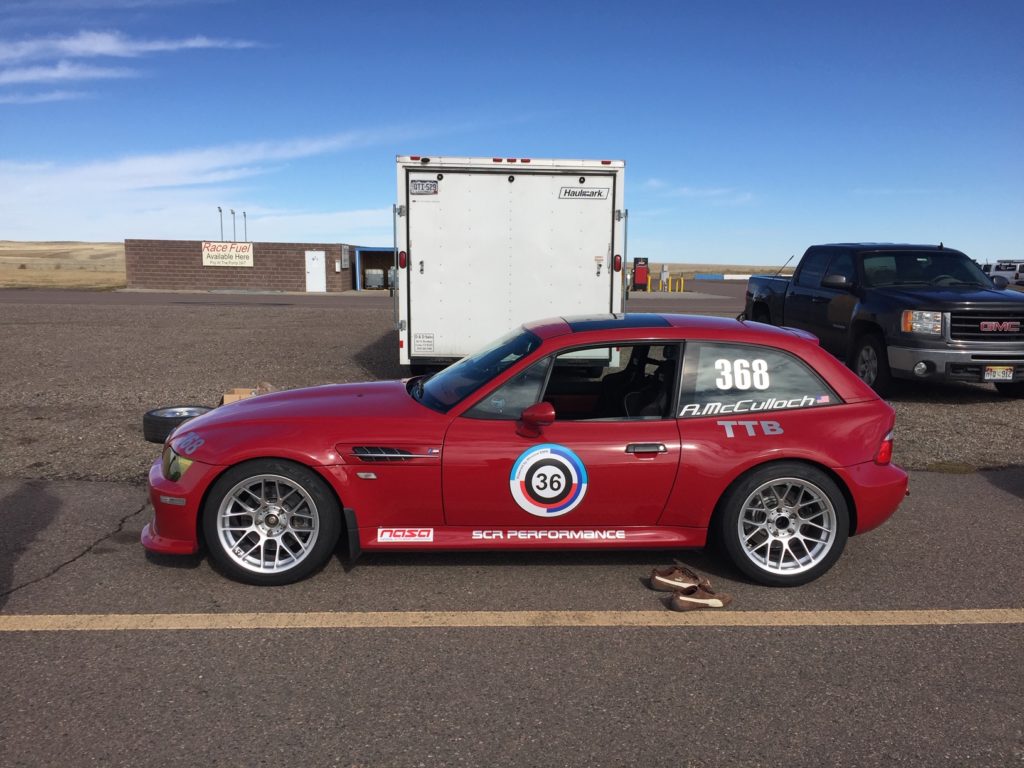
My more precious Clown Shoe.
With a race car comes the need to get it to the race track, and a place to stay when you get there. For that, I’m going visit a topic that is relevant to any BMW-wielding track addict: tow rigs. My first tow rig was simply my daily-driver 1997 Toyota Tacoma pickup with a Wildernest camper shell on the back. The V6-powered Tacoma wasn’t the most powerful tow vehicle, but with a lightweight open trailer it could do 75 mph in the flatlands.
The Wildernest is a truck-bed topper made in the 1990s with a top that opened like a can opener and a large Boy-Scout-style tent that folded up out of it. There has been a resurgence of pop-up and foldout light-truck-bed campers in recent years, but prior to that, the Wildernest was the ticket. The large tent consisted of loosely fitted canvas over steel poles, which acted like a sail in strong winds, a common occurrence at all of our local race tracks on the windswept high plains. I spent many a windy night clinging to my bed as the truck rocked violently from port to starboard like a small sailboat in violent seas. The fear of capsizing was real—even on dry land!
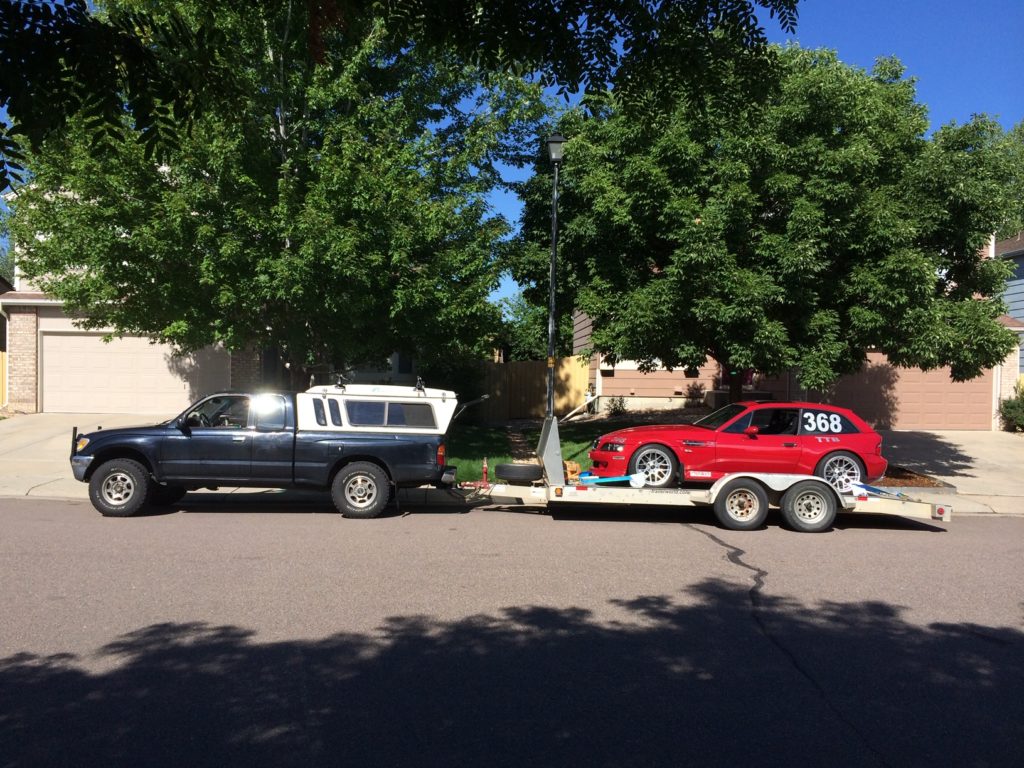
My first tow rig was my Toyota Tacoma with a Wildernest camper shell.
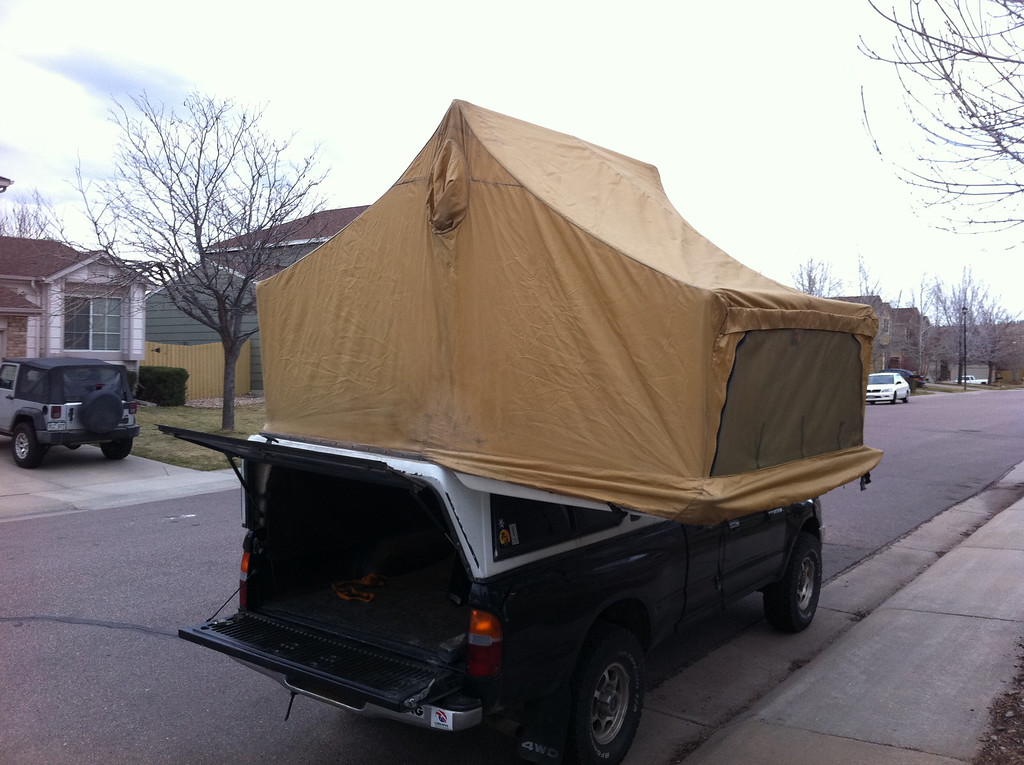
The Wildernest tent opened up, Boy Scout style.
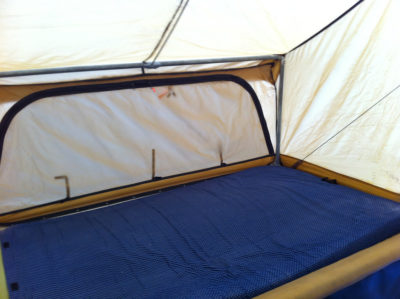
The bed lies on the top of the camper shell
Eventually, I started my car business and found myself doing significantly more towing. The Tacoma gave way to something more capable when a friend sold me his tow rig: a 2001 GMC 3500 Savannah Explorer conversion van. The Explorer conversion added a high-top roof and a fold-down power bed in the back. My friend even custom-built the inside with bench seats and storage cabinets, and a window-unit air-conditioner mounted in a custom plywood mount that took up the entire front passenger-side window. It certainly wasn’t the prettiest rig in the paddock, hillbilly air-conditioner notwithstanding, but it has done the job faithfully for the last several years. That’s because despite its rather creepy exterior, it has something underneath the hood that makes it a unicorn: an 8.1-liter big block Vortec V8 engine good for 440-pound-feet of towing torque. Search the Internet far and wide, and you will be hard-pressed to find an 8.1-liter Vortec in any van, much less an Explorer.
The 8.1-liter Vortec was the gas alternative to the more expensive (and more costly to maintain) diesels of the day, but its trade-off is comical gas mileage when towing: Single-digit figures are the norm for my usual enclosed-trailer payload. It was the final Chevrolet big-block V8.
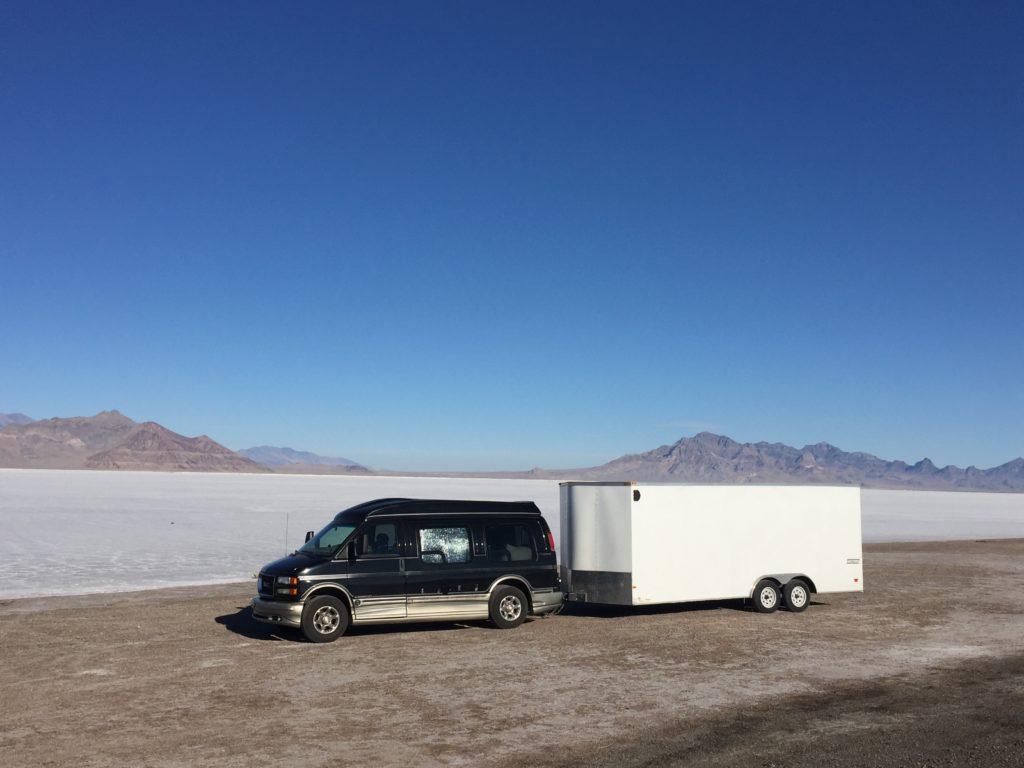
The unicorn GMC 3500 Savana Explorer van has a towing-capable 8.1-liter Vortec V8.
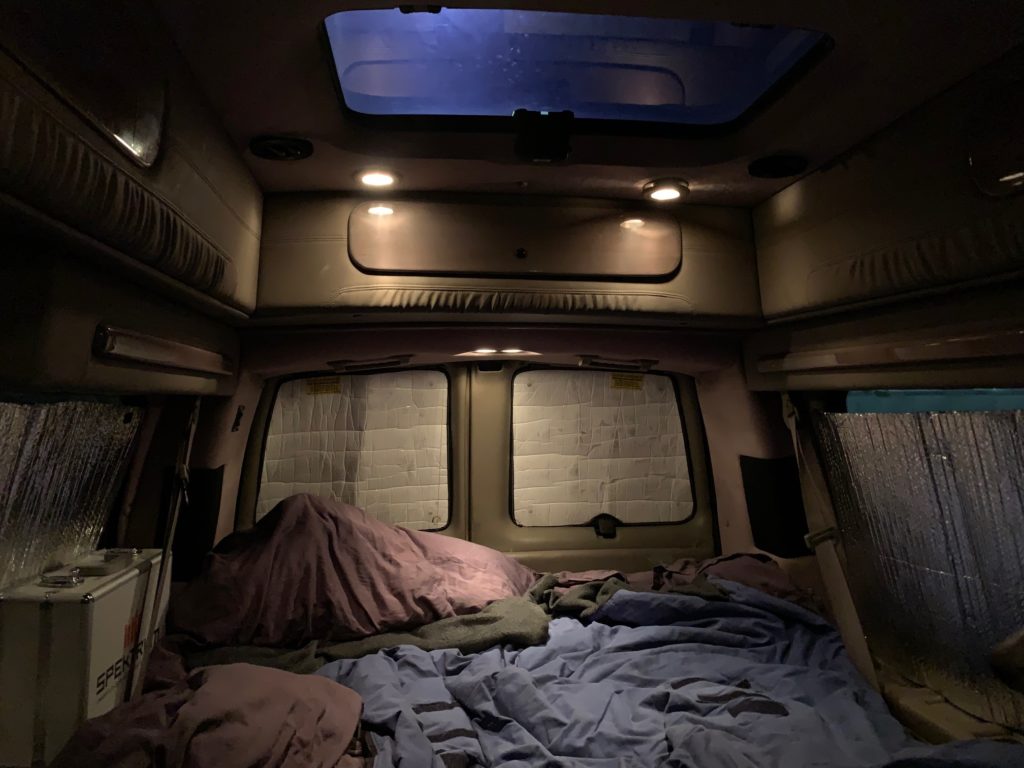
The interior has suitable accommodations for paddock sleeping.
Neither the Tacoma or GMC van is the best tool for the mission, one that also includes occasional summer camping duty, but they were both very affordable. If I hadn’t spent all of my money on race cars (and red cars), then I’d have the budget to support a proper tow rig—but paradoxically, then I wouldn’t have anything to tow to the track, either.
The GMC’s gas mileage has been compounded by general age-related wear and tear. I purchased it for $7,500 and have spared no expense maintaining it for a total cost of about $17,000 at present. That has bought me over 40,000 miles, the majority of which have been spent towing. Now I’m at a crossroads: Do I continue to maintain the GMC van or search for a new tow rig? I need to tow a minimum of 7,500 pounds, but something with a 10,000-pound or higher rating will make it much less terrifying when cresting the high passes of the Continental Divide.
If money were no object, a Toterhome with a living quarters, a workshop, and a space for several cars would be the ticket. This Kenworth K100 Truck would be my dream rig. Check out that diamond-plate toilet surround!
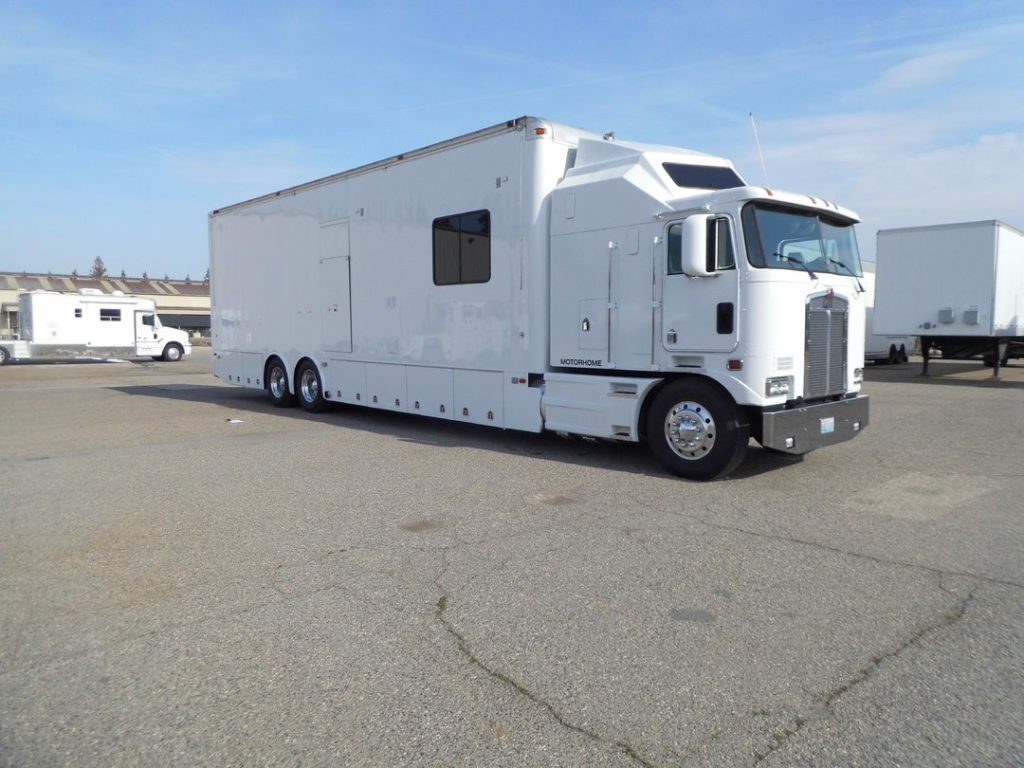
A toter home would solve all of my problems!
Of course, money is an object, so I’ll head back down to earth. The most appropriate tool would be a full-size diesel truck, and many fitting examples could be had for a reasonable price, even considering the diesel premium. A truck with a built-in camper shell (think a platform bed over the wheel wells with drawers underneath) would make a fine option, but that’s not a great place to hang out in a rest area or between races. A truck with an in-bed camper would improve the living quarters, but that drives up the cost and weight.
This Ford F-550 with bed camper would be a good option.
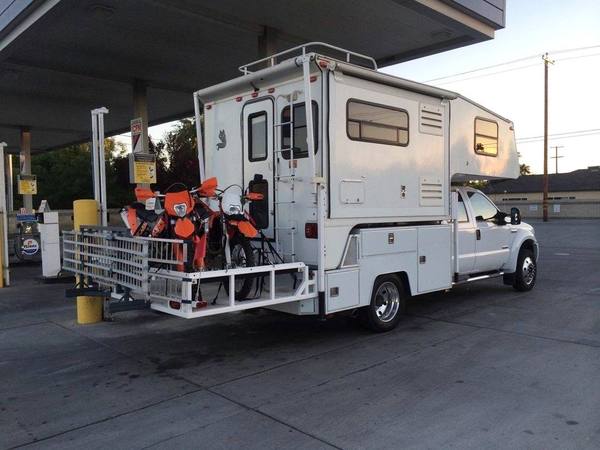
A diesel truck with a slide-in camper is probably the most practical solution.
But the devil is in the details. Diesel maintenance costs scare me (I’ve owned a few in the past), and those trailers are not cheap. Plus there is a certain convenience and comfort to a van. Being able to pull off virtually anywhere you want, crawl in the insulated back under the radar, and go to sleep is huge when putting in long cross-country miles.
The next logical step would be a small RV, but the cost and complexity make all but the bottom-of the-market examples a pipe dream. Looking at pictures of those bottom-of-the-market examples (and believe me, I have spend hours doing so), they are not examples I would want to touch anything on the inside of—much less try to sleep in while ignoring the inevitable creepy-crawlies visiting me in the previously soiled bed. Gross!
This GMC van-based RV tempted me, but it was expensive, would struggle to meet my tow requirements, and still looked a little gross inside.
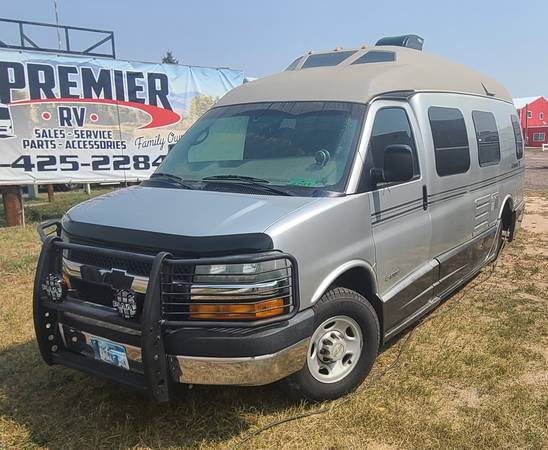
The small RV option has its own pros and cons.
The dirt-bag van-lifer in me also isn’t quite ready to make the leap into RV-dom, although I do foresee that being the next step in the not-so-distant future. There are older large-displacement diesel vans out there capable of my towing requirements, but they also carry huge premiums and have largely been replaced by the popularity of the smaller Mercedes Sprinter/Ford Transit/Dodge Promaster segments—none of which meets my towing-payload needs.
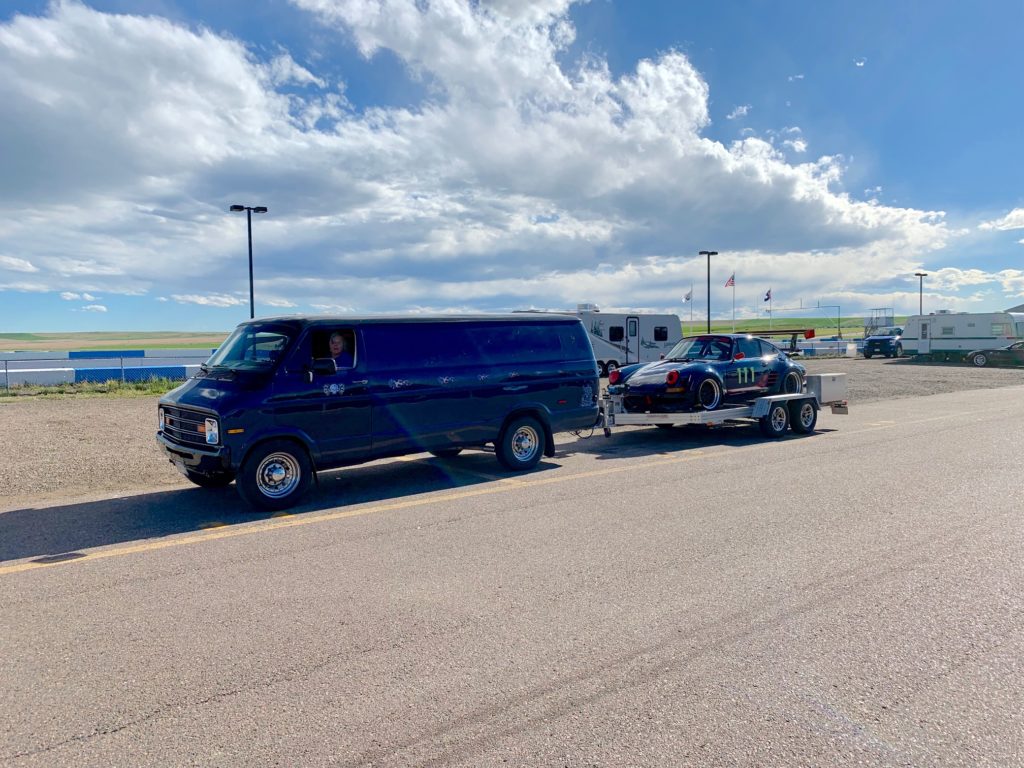
A friend of mine has an inspiring matching van/race-car setup.
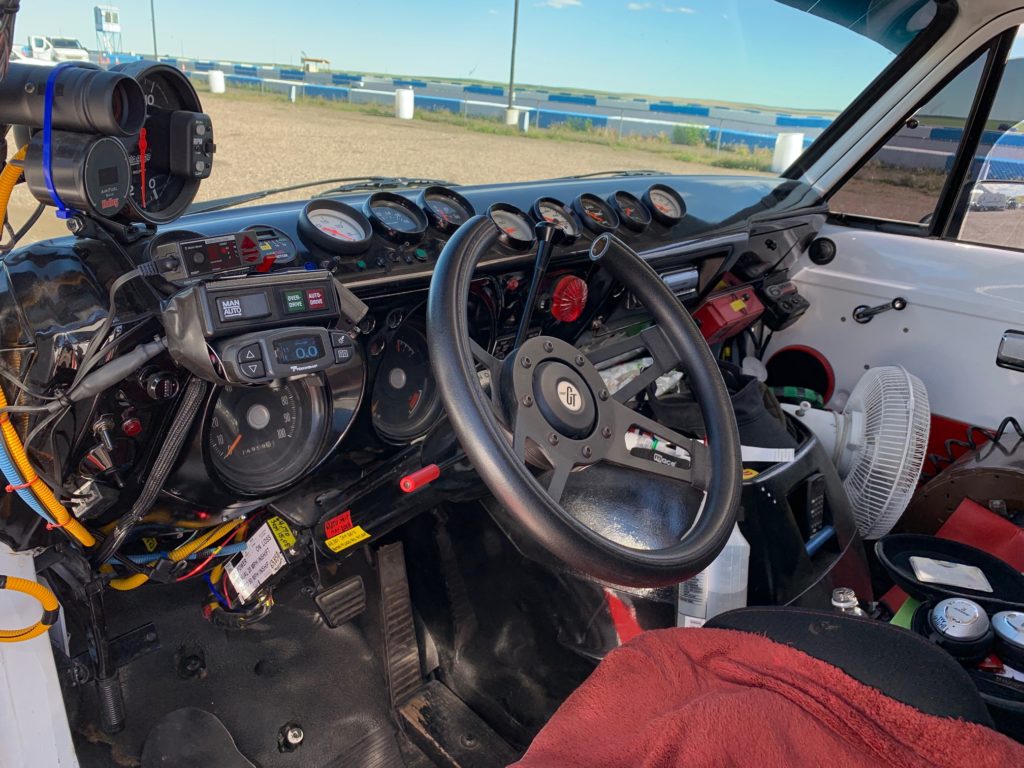
This is the cockpit of the van, not the race car!
An interesting alternative would be a Powerstroke diesel Ford Excursion. The Excursion is basically a Ford F-250 in SUV form with an 11,000-pound towing capacity. You could remove both sets of rear seats and add a very civilized and already insulated living quarters from the front seats back, but the diesel Ford Excursion already has its own fanatic following—which is driving price premiums—and its own issues to watch out for. My brother almost won this 2003 Ford Excursion on eBay, but a persistent bidder put it just out of his budget.
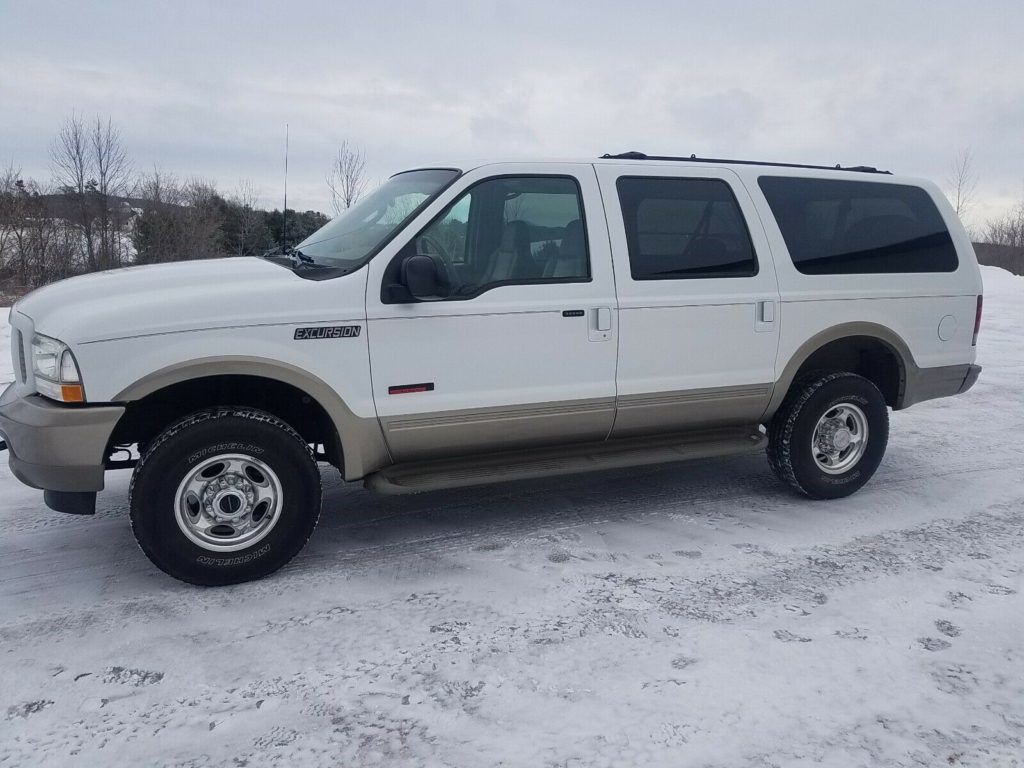
The Ford Excursion offers diesel-truck towing capability with enough space to add accommodations to the inside.
That puts me back in the same conundrum as when I started this towing van quest: Spend more money on my unicorn 8.1-liter GMC van or look for something else.
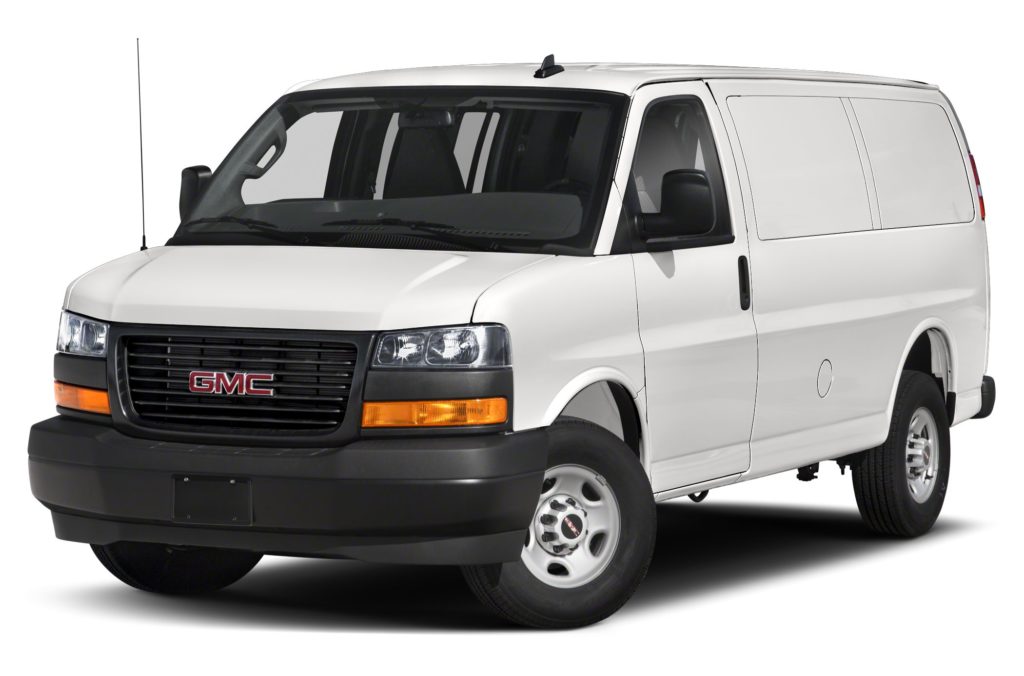
A new 2021 GMC 3500 Savana van has better performance and new-vehicle reliably.
Fundamentally, it’s usually cheaper to just keep and maintain the vehicle you already own, since it is a known quantity. Even if the engine goes out on my GMC, a new crate engine is shockingly affordable—especially from a BMW parts perspective.
I do, however, have another scheme up my sleeve. A good friend owns a GMC dealership and happens to have new 2021 3500 Savannah cargo van in his inventory. The 2021 model year has a 6.6-liter V8 with cylinder de-activation. The new Savannah has more power and torque than my old piston-slapper 8.1-liter V8, with better gas mileage and a 10,000-pound towing capacity. It also has the optional locking rear differential (which is more than adequate for my needs with proper snow tires). If I sold both my 8.1-liter van and my beater Tacoma, with a little friendly negotiating, I could probably afford to add a Colorado Camper Van pop-top for standing room and an optional second bed. I’d have to insulate and add accommodations to the interior to meet my needs, but for the hassle, I’d enjoy new-car reliability, lower operating costs, and increased towing capacity.
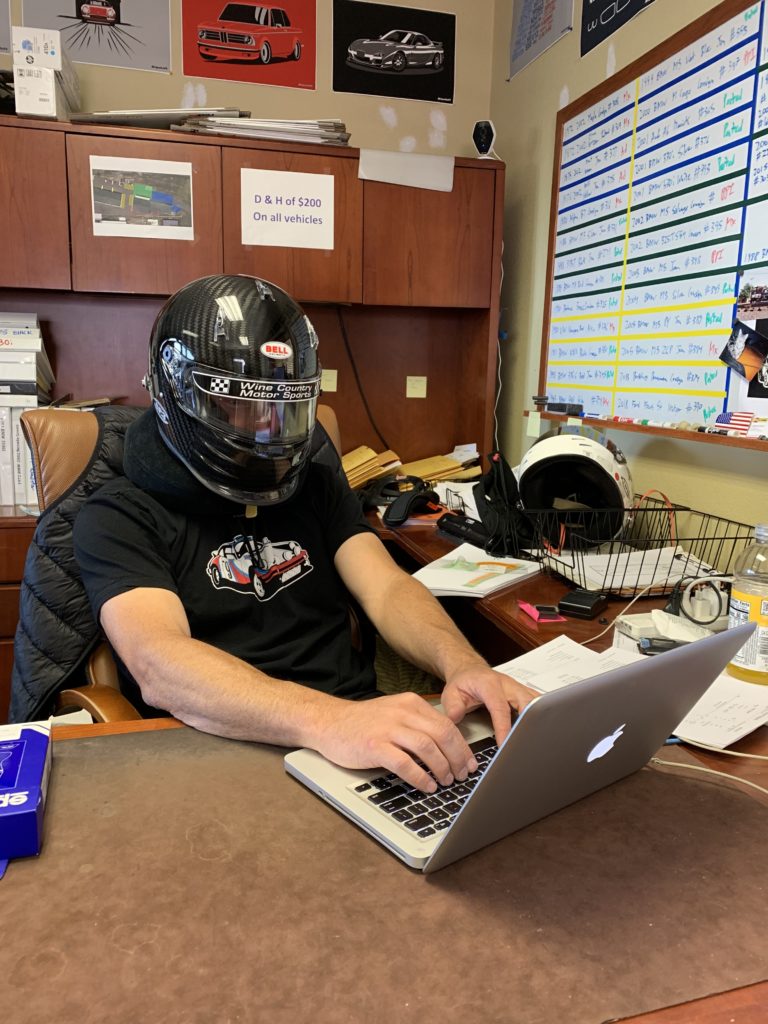
I’m ready to go racing, I just need to get there first!
I haven’t made a decision to execute this plan or keep the ol’ piston-slapper van. What I do know is that there is a new race car in the quiver, and with that will come a much-needed reunion with race-track tarmac. I just need to figure out how to get it there first.—Alex McCulloch
[Photos courtesy Alex McCulloch.]

